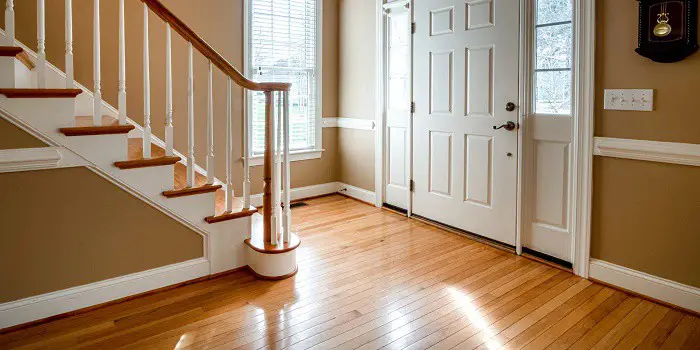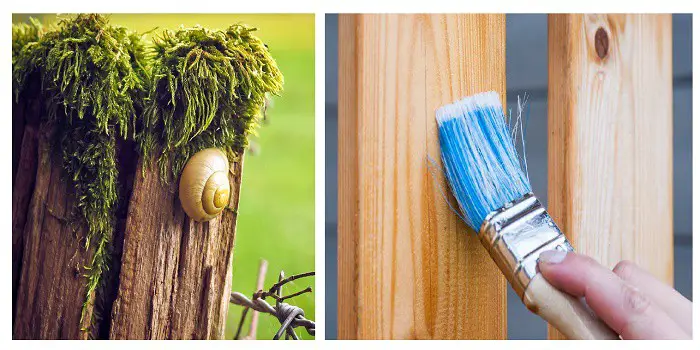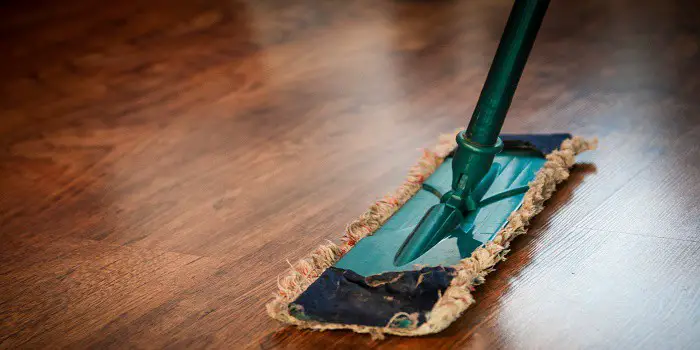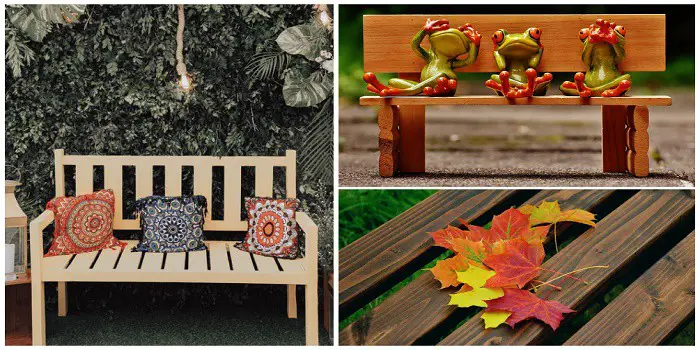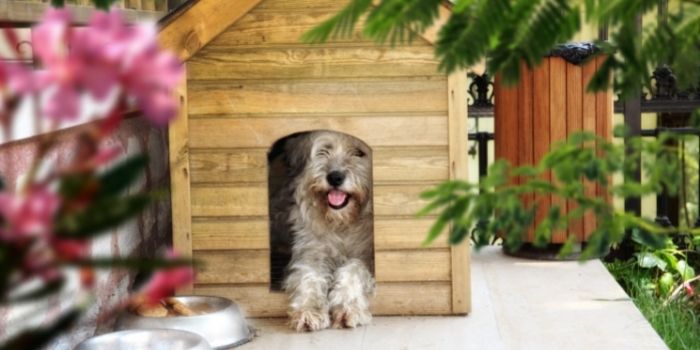
If you’re like me, you love your furry friend more than anything and want to make sure their home is perfect.
That’s why I was so excited when I received a wooden dog kennel from my dearest friend for Christmas.
I immediately went to the internet to try and find the best paint to use on it, but there were so many options.
So which type of paint should you choose for your wooden dog kennel?And what have I finally used on my dog house? Let’s take a closer look.
Best Pet Safe Paints for Wood
As a pet parent, you want to ensure that everything in your home is safe for your furry friend. That includes the paint you use on their dog house.
Here are 5 of the best pet-safe paints for wood that you can use on your wooden dog kennel:
1- ECOS Paint
This paint is made with water instead of petroleum, making it safe for your pet and better for the environment.
It’s also low-odor and free of VOCs, so you don’t have to worry about your pet being bothered by the smell.
2- Sherwin-Williams Harmony
This paint is zero-VOC and has very low emissions, making it an excellent choice for pet parents concerned about air quality.
It’s also durable and easy to clean, so you won’t have to worry about your pup ruining their dog house.
3- Chalk Paint by Annie Sloan
Chalk paint is a great choice if you want a distressed look for your dog’s house.
It’s also non-toxic and safe for both humans and animals. So you can safely use them for your dog’s kennel.
4- Milk Paint by The Real Milk Paint Co.
The milk paint is not anything Milk, but it’s made from all-natural ingredients, so you can rest assured that it’s safe for your pet.
It’s also eco-friendly and easy to clean up.
5- Non-toxic Latex Exterior Spray Paint for Dog Crate by Rust-Oleum
This paint is an excellent choice if you’re looking for an easy way to achieve a professional-looking finish.
It’s also non-toxic and safe for both humans and animals.
Choosing the Right Paint for Your Dog House
One of the most important things to consider when painting your wooden dog kennel is the type of paint you use.
Not only should it withstand the elements, but it should be durable and safe for your furry friend – the last thing you want is for your dog to get sick from licking the paint off their kennel.
While Real Milk is also my favorite, I ended up choosing to use latex exterior paint for my wooden dog kennel.
I liked that it was durable and could withstand the weather. I also felt confident that it was safe for my dog since it is commonly used on children’s toys.
If you decide to use a different type of paint, just do your research to ensure it is safe for your pet and will withstand the elements.
What paints and finishes should you not use for your pet house?
You should not use any paints or finishes that contain lead. Lead is hazardous for humans and animals and can cause serious health problems.
It’s also good to avoid paints with ingredients:
- Ammonia
- Acetone
- Biocides
- Formaldehyde
- Fungicides
Solvent-based finishes such as Polyurethane, Varnish, Lacquer, etc., also contain ingredients that can be harmful to both humans and animals, so it’s best to avoid them if possible.
If you must use a solvent-based finish, ventilate the area well and keep your pets out of the room until the finish is completely dry.
Also, choose paints or finishes that contain low or no volatile organic compounds (VOCs), which can be harmful to both humans and animals and can cause respiratory problems.
If unsure if the paint or finish contains lead or VOCs, you can check the label or contact the manufacturer. When in doubt, avoiding caution and choosing a different product is always better.

What Color Should You Paint Your Dog Kennel?
Once you’ve decided on the type of paint you will use, it’s time to choose a color.
If you’re painting the outside of your dog’s kennel, you’ll want to choose a color that compliments your home. You don’t want it to stick out like a sore thumb.
I ended up choosing a light blue color for my dog house because I thought it would look cute against my brick home and wouldn’t get too hot in the summer sun.
If you’re painting the inside of your dog’s kennel, you can choose any color you want.
Your pup doesn’t care what color their house is as long as they have a comfy place to sleep.
I chose to paint the inside of my dog’s kennel white so it would be easy to clean.
Deciding on a Type of Finish
After you’ve chosen the paint color, you’ll need to decide on the type of finish you want.
There are two main types of paint finishes: glossy and matte.
Glossy finishes are more durable and easier to clean, but they can also show scratches more easily. Matte finishes, on the other hand, are less durable but can help hide imperfections.
I decided to go with a glossy finish for my dog’s kennel since I wanted it to be easy to clean.
You May Ask What about Satin, Eggshell, or Semi-Gloss?
Satin, eggshell, and semi-gloss are all types of finishes that fall somewhere between glossy and matte.
They’re more durable than matte finishes but not as durable as glossy finishes.
They’re also easier to clean than matte finishes but not as easy to clean as glossy finishes.
I recommend using satin, eggshell, or semi-gloss if you didn’t decide between a glossy or matte finish. It’s really up to you.
How to Paint Your Dog House – Tips for Long-Lasting Results?
Now that you’ve chosen the type of paint and color, it’s time to start. Follow these steps for painting your dog house…
- You’ll want to start by cleaning the surface of your dog house.
- Remove any dirt, dust, or cobwebs.
- Then, use a primer to prep the surface for painting.
- Once the primer is dry, you can start painting your dog house.
- Use a paintbrush or roller to apply the paint evenly.
- Make sure you get into all the nooks and crannies.
- If you’re using chalk paint, you may need to apply multiple coats to achieve the desired coverage.
- Once the paint is dry, you can add any finishing touches you want.
- You may want to paint your dog’s name on the door or add cute stencils.
- Or, you could keep it simple and just enjoy your handiwork.
How to Keep Your Pet Cats & Dogs Safe While Painting Their House?
If you have any pets, ensure they’re safe while painting – do not make them get sick from the paint fumes just because you are careless.
Here are some tips for keeping your pets safe while painting…
1- If possible, arrange for someone to watch your pet while you’re painting.
2- If you can’t find someone to watch your pet, put them in a room far away from where you’ll be painting.
3- Close all the doors and windows in the room where you’re painting to keep the fumes from getting out.
4- Open the windows in the room where your pet is to let fresh air in.
5- If using chalk paint, ensure it’s completely dry before letting your pet back in the room.
6- Clean up any paint drips or spills immediately and wash your hands thoroughly after painting.
7- Keep all paints and paint thinners out of reach of your pets.
Following these tips will help you keep your furry friend safe while you’re painting their dog house.
FAQs
Can I paint my cat’s house?
Yes, you can paint your cat’s house. Just follow the same steps as you would for painting a dog house.
Also, make sure you use pet-safe paint if your cat will be spending any time in the house while it’s still drying.
What if your dog or cat eats paint?
If your pet ingests paint, it’s essential to seek medical attention immediately. Ingesting paint can be hazardous and even fatal for pets.
Call your veterinarian or the ASPCA Animal Poison Control Center if you think your pet has eaten paint. Do not try to make your pet vomit unless you are instructed to do so by a medical professional.
What if your pet gets paint on their fur or skin?
If your pet gets paint on their fur, skin, or paws, it’s important to remove it as soon as possible. Paint can be very dangerous for pets if ingested and can cause skin irritations.
To remove paint from your pet’s fur, start by using a damp cloth to wipe away as much of the paint as possible.
Then, use a pet-safe shampoo to wash your pet’s fur. If the paint doesn’t come off with shampoo, you may need to take your pet to a groomer.
Share the post "What Type of Paint to Use for Your Wooden Dog Kennel?"

Hi, I am Mark Garner a professional carpenter, woodworker, and DIY painter. I live in the small city of Peoria, Arizona as a semi-retired woodworker. I have started this blog with a simple motive to help you with my wood experience in this sector. If you like to know more about what I love doing and how it all got started, you can check more about me here.

